Russia's use of the territory of occupied Crimea for aggression against Ukraine and creating a threat to the countries of the region
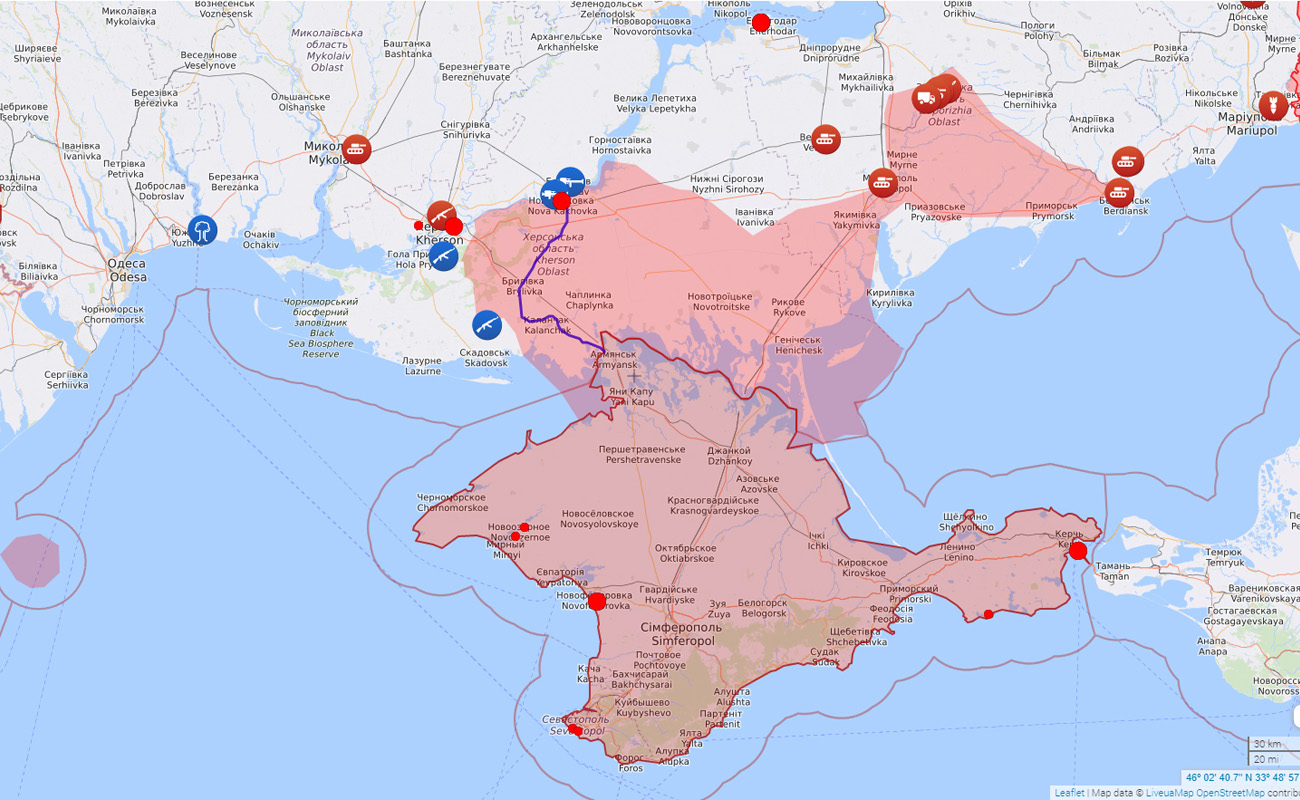
The Monitoring Group of BlackSeaNews and
the Black Sea Institute of Strategic Studies
Russian began preparing an invasion of mainland Ukraine from Crimea immediately after its 2014 occupation of the peninsula and the ensuing attack on Donbas.
To that end, an offensive group of forces consisting mainly of battalion tactical groups of the 7th and 76th Airborne Assault Divisions operating on a rotational basis, was promptly formed in the northern part of Crimean Peninsula, in the proximity of the Perekop Wall. Further north, lines of field and rear fortifications were also set up.
The January 2015 formation of the 39th Army Aviation Helicopter Regiment with Mi-35, Mi-28 and Ka-52 attack helicopters and transport/combat Mi-8AMTSh helicopters in Dzhankoi, as well as the later redeployment of the 97th Parachute Regiment became important indicators of the preparing offensive.
Putting together the second echelon involved the creation in 2016-2017 of the 22nd Army Corps of the Black Sea Fleet that included:
• 126th Coastal Defense Brigade established on the deployment site of the Ukrainian 36th Coastal Defense Brigade in Perevalne
• 8th Artillery Regiment in Simferopol armed with 152-mm Msta-B howitzers and RSZV 2B26, a modernized GRAD
• 127th reconnaissance brigade in Sevastopol
• Sevastopol 810th independent marine brigade.
In July 2014, the 43rd independent naval assault aviation regiment (INAAR) of the BSF — since 1999, on Su-24M attack bombers — was redeployed from the Gvardiiske Airfield near Simferopol to the Saki Airfield in Novofedorivka, previously of Ukraine’s Naval Aviation.
In Gvardiiske, it was replaced by the 37th aviation regiment of the Russian Air Force consisting of two squadrons — one of the Su-24M front-line bombers and the other of the Su-25SM attack aircrafts. The bombing and assault aviation was to be covered by the 38th fighter aviation regiment formed at the Belbek Air Base in Sevastopol on Su-30M2 and Su-27SM, as well as Su-30SM fighters transferred to the BSF 43rd INAAR at the Saki Air Force Base.
Preparations for war in the Black and Azov Seas were also evidenced by the rapid enforcement of the BSF with coastal action ships, including such carriers of the KR Caliber as 4 patrol ships of the 21631 Buyan-M projects in 2018-2021, 4 of the 22160 Bykov in 2018-2022 and patrol and 7 assault boats of the 03160 Raptor project in 2015-2017.
Over 2015-2021, the number of close-range attack ships and Caliber-PL carrier submarines of the 636 project added to the BSF significantly exceeded that of other vessel types.
The nature of future hostilities was further evidenced by the large-scale Kavkaz-2020 exercises on the Black Sea and, especially, the autumn exercises of the RF Southern Military District (SMD) that took place in Crimea in October 2021.
* * *
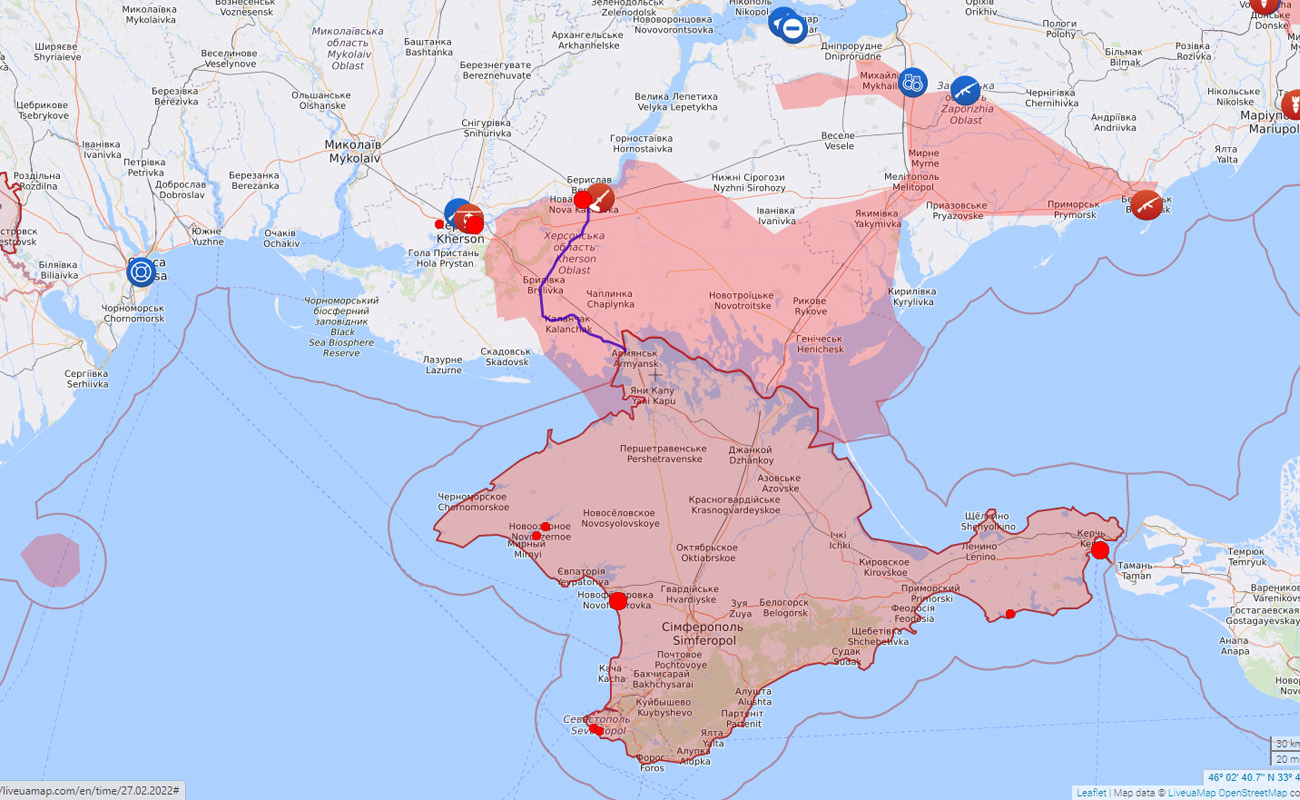
On February 24, in cooperation with the 8th and 58th Combined Arms Armies, the 4th Army of the Air Force and Air Defense Forces, the SMD troops with a surprise powerful blow broke through the defense of the Armed Forces of Ukraine on the Crimean Isthmus and succeeded on the Melitopol–Berdyansk–Mariupol direction to the east and Nova Kakhovka–Kherson–Mykolaiv to the west.
Eventually, they were stopped in heavy defensive battles on the approaches to Mykolaiv and Zaporizhzhia with the Dnieper river in the area of the Kakhovsky Reservoir becoming a natural obstacle.
The RF BSF based in the occupied Crimea and the Russia’s Krasnodar Krai took an active part in the SMD offensive.
The main tasks of the Navy were support of the ground troops’ actions in the coastal regions, a naval blockade, i.e. isolation of the areas of hostilities, and missile strikes on infrastructure facilities on the Ukrainian territory.
For that purpose, a naval strike group of three to five frigate-corvette class warships was formed in the northwestern part of the Black Sea west of Cape Tarkhankut, namely, the project 11356 frigates and project 22160 patrol ships of the RF BSF, each carrying 2× 4 PU Caliber-NK anti-tank missile.
In addition, one-two submarines of the 4th RF BSF submarine brigade, each carrying 6x1 Caliber-PL anti-ship missiles were deployed to the area.
In the first months of the invasion, the Russians apparently had high hopes for a amphibious assault operation in Ukraine’s rear, as a group of their four to five large amphibious projects 775 and 1171 ships was stationed off the coast of Odesa.
The situation changed radically after the first successful AFU use of the Neptun coastal anti-ship missile complex and later, the Harpoon supplied by Ukraine’s partners.
In late June-early July, the AFU operation on the destruction of the enemy forces that had captured Zmiiny Island, its air defense equipment stationed there and Russia’s BSF surface and air surveillance system for the northwestern part of the Black Sea forced the enemy to evacuate from both Zmiiny and maritime objects of Chornomornaftogaz.
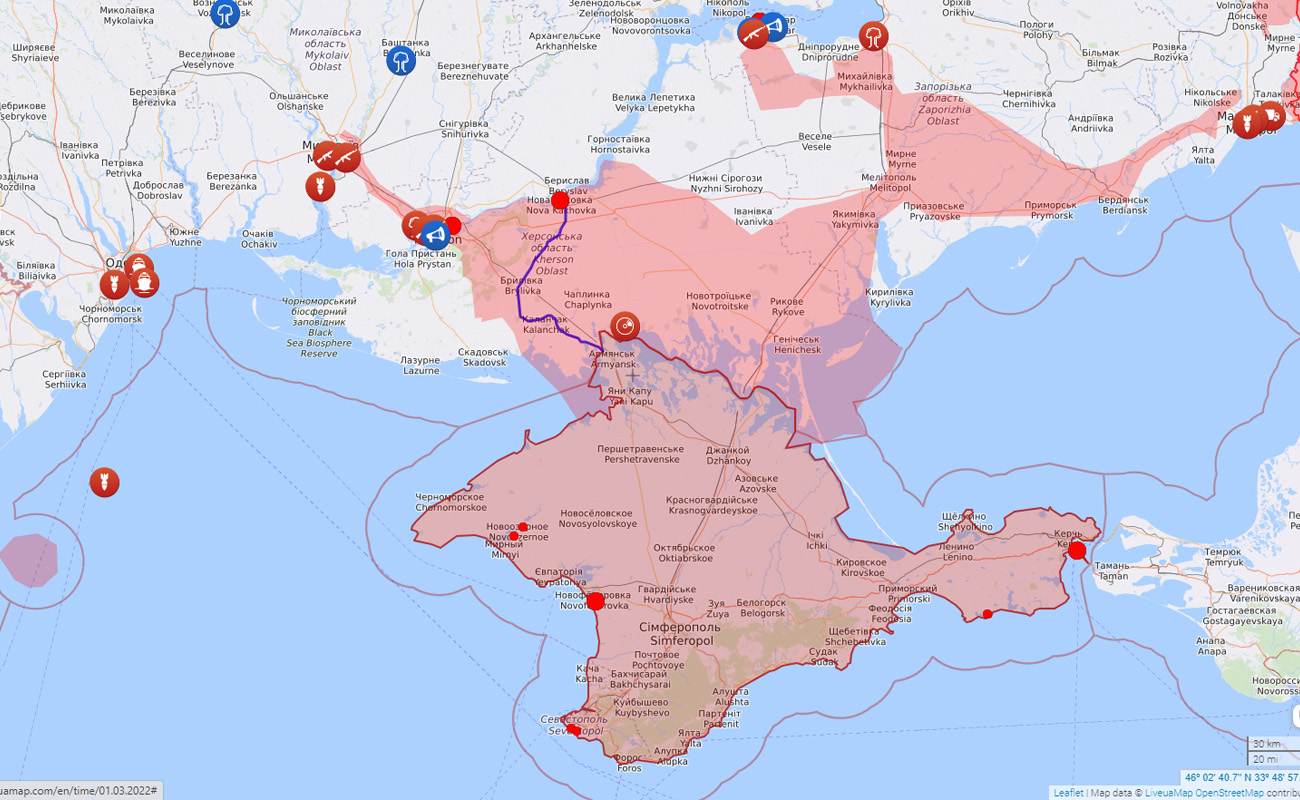
Later, due to the threat of the AFU missile and artillery fire, the Russian naval group moved east to the coast of Crimea.
Thus, the number of Russian ships in the northwestern part of the Black Sea dropped to an average of two strike ships and one amphibious assault ship, while the threat of an amphibious assault decreased significantly.
Eventually, the AFU strides towards unblocking the north-western part of the Black Sea, together with political and diplomatic efforts, made it possible to open on July 22 the so-called «grain corridors» from the ports of Odesa, Pivdenny and Chornomorsk.
Despite that, the threat of the Russian Navy’s missile strikes on the ships sailing from the Ukrainian ports remains, as does a great danger of mines left in abundance by the Russian ships and submarines.
Since a large number of Russia's sea-launched cruise missiles has been spent already, the threat of their future mass use by its navy has significantly decreased, however, overall, the danger of missile strikes on infrastructure both deep in the territory of Ukraine and on objects on the Ukrainian coast of the Black Sea remains. The danger comes not only from ships, but also, from coastal missile complexes Bal positioned on Crimea’s Cape Tarkhankut, as well as Tu-22M3 long-range bombers of the 43rd Centre for Combat Employment and Retraining of Personnel of Long-Range Aviation from the Black and Azov Seas and strategic Tu- 95MS bombers of the 929th state flight-test center (GLITS) from the Caspian Sea’s Engels airfield.
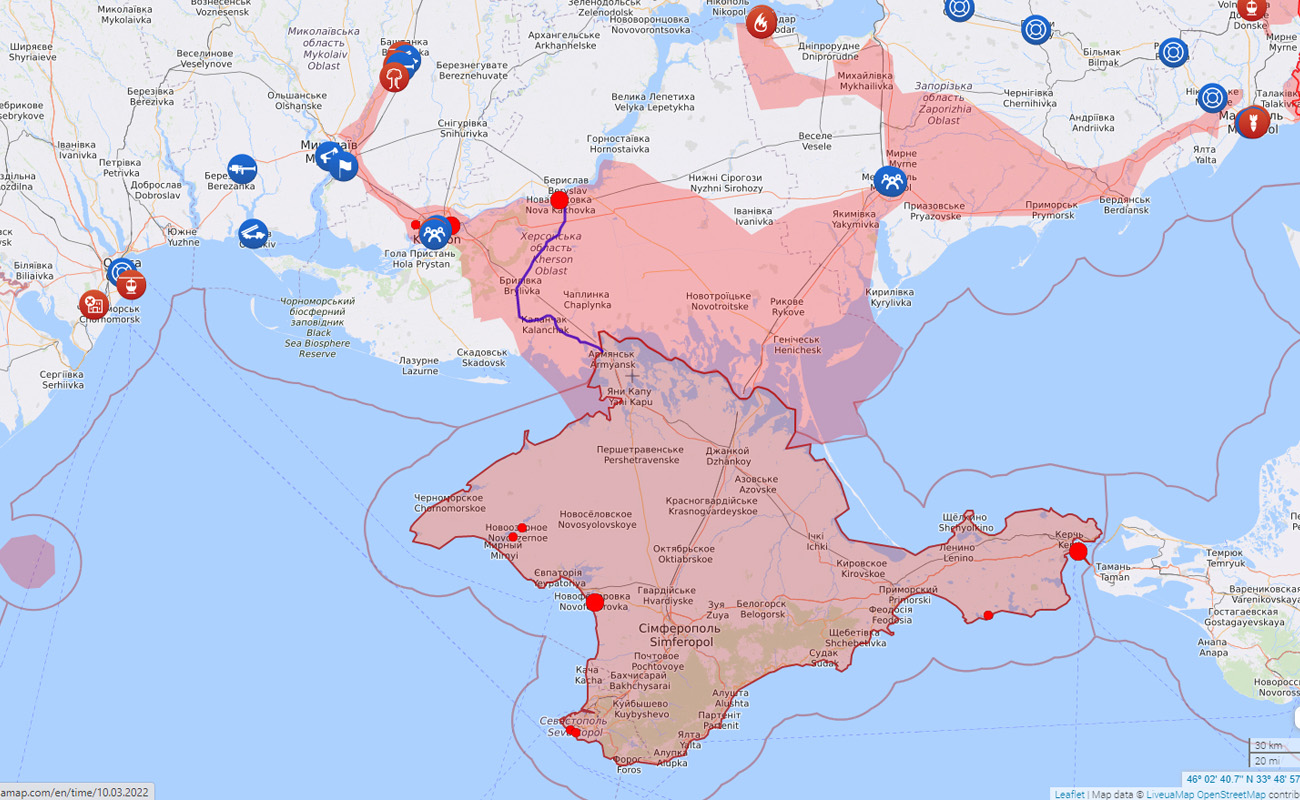
At present, a number of units of Russia’s 22nd Army Corps and the 810th BSF Marine Brigade are involved in the military operations of the SMD in the south of Ukraine on the northern edge of the Kherson and Kryvorizhsky directions.
Both the ground and coastal defense units of the Russian Navy suffer considerable casualties in the ongoing battles in southern Ukraine. While their personnel is replenished mainly by those mobilized from the southern regions of the Russian Federation, their equipment stock — by the weapons discharged from storage, including that of the 943rd mobilization deployment support center (MDSC) in Novoozerny at Lake Donuzlav.
By now, the stock of the 943rd MDSC equipment is largely exhausted, so new munitions are supplied mainly by railway from the RF territory via the Crimean bridge and in part, by military transport aircraft via the Belbek airfield and Simferopol airport currently closed to civilian air transport.
The main military logistics hub in the north of the Crimean Peninsula is Dzhankoi.
That is the area where railway line to Feodosia-Kerch and further, via the Crimean bridge, the territory of Russia's Rostov region, intersects with the Crimean line from Sevastopol-Simferopol and a side line from Yevpatoria-Saki-Ostryakovo to Novoaleksiivka-Melitopol in the occupied part of Zaporizhzhia in the east and Vadym-Kherson in the west. The Kalanchak-Armyansk-Kerch, Chongar-Dzhankoi-Simferopol and Dzhankoi-Gvardiiske highways also run there.
Also, we shouldn’t dismiss the threat of a nuclear strike from Crimea or the Russian Navy’s ships stationed in the area.
A number of sources mentioned that since 2017, the authorities of the 12th Main Directorate of the Ministry of Defense of the Russian Federation restored the Feodosiya-13 facility — a previously abandoned Soviet storage for nuclear munition in the Kyzyltash tract, near the village of Krasnokamyanka of the Feodosia City Council.
According to the available data, the Russians are considering the possibility of basing a reserve SMD Central Nuclear Weapons Storage Facility there, with the 6th department of the BSF headquarters that ensures the storage, maintenance and operation of the tactical munitions’ special warheads based in Sevastopol. Long-term storage and maintenance of nuclear warheads for naval munition is provided by the Novorossiysk-based technical service and repair facility.
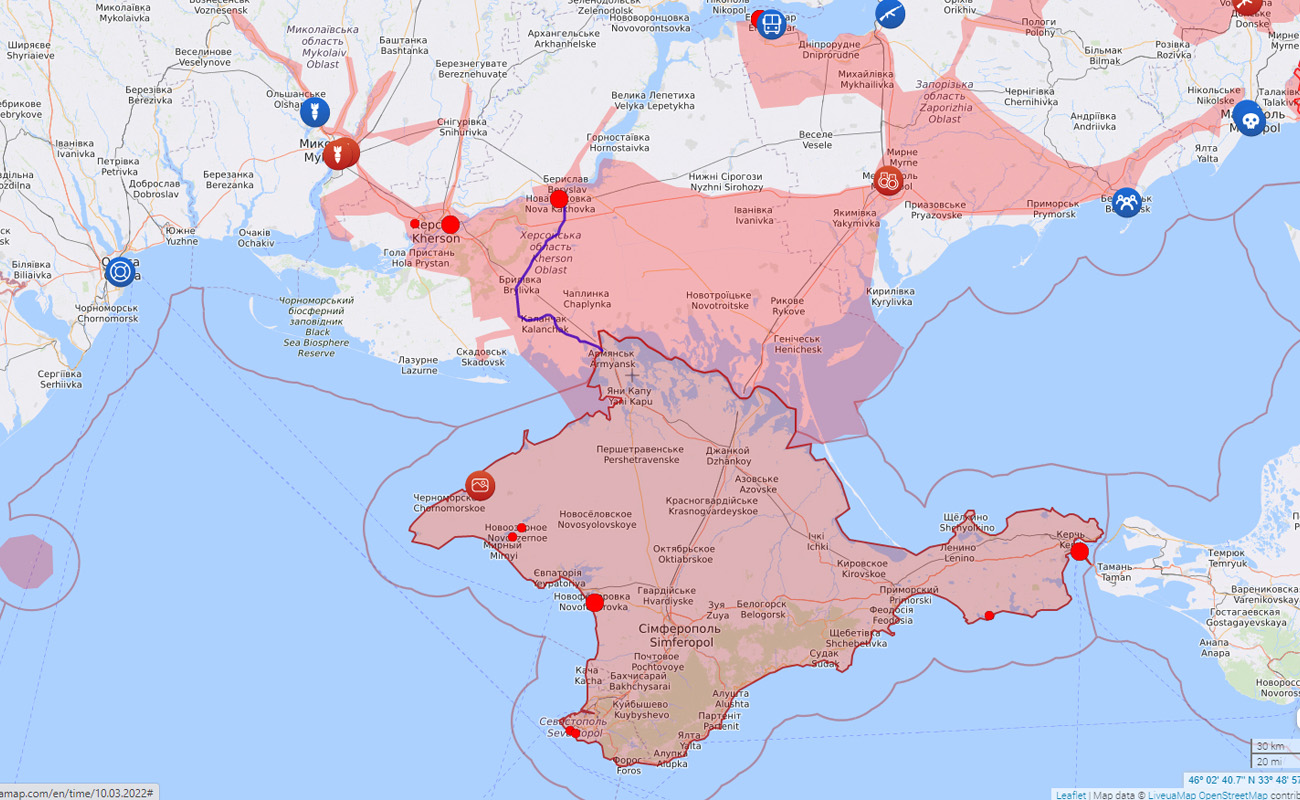
Starting in February 2022, the Russian Federation has been blocking all international shipping through the Kerch Strait and the Sea of Azov.
The occupied ports of Berdyansk and Mariupol have been used mainly for the delivery of military cargo for the occupying forces from Sevastopol and Novorossiysk and removal of stolen property and grain of Ukrainian enterprises remaining in the occupied territory.
Due to the large-scale hostilities between Russia and Ukraine, Turkey, guided by the provisions of the Montreux Convention, starting March 1, 2022, closed the Black Sea Straits to the warships of the sea’s littoral and non-littoral states.
As a result, some of the Russian Navy Northern and Baltic Fleets’ ships that had earlier entered the Black Sea to participate in a military operation against Ukraine under the pretext of training, found themselves blocked there. And vice versa, the ships that took part in the Russian operations in Syria got cut off from their Black Sea bases.
Despite the fact that, as the Russian-Ukrainian war progressed, the intensity of Russia’s combat operations in Syria significantly decreased, its BSF ships and submarines remaining in the Mediterranean Sea and carrying Caliber anti-missile defense systems still pose danger. And not only for the armed formations of the Syrian opposition, but also for other Mediterranean states, primarily for NATO member states, as well as for ships and facilities of the US 6th Fleet there.
One of the tense incidents between the Russian Navy ships on the one hand, and USS Harry Truman and the Italian Navy ships on the other, that occurred in the Adriatic Sea in July 2022, led to the Italian Navy’s command changing the fleet's tasks from patrolling the areas close to Italy’s shores to patrolling the entire Mediterranean basin. Given the growing tensions and the inadequacy of the Russian military and political leadership’s behavior, the recurrence of such incidents certainly can’t be ruled out.
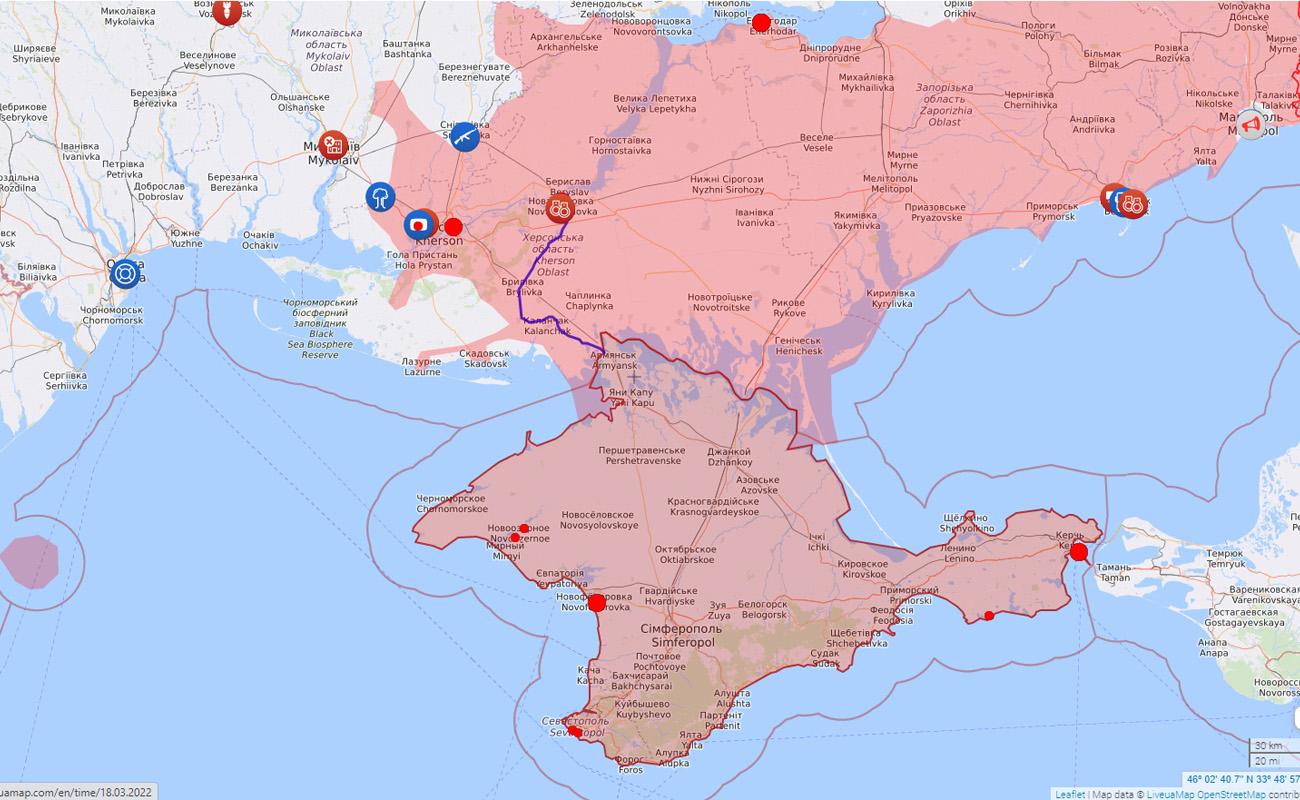
Thus, in preparation for a large-scale invasion of Ukraine, the Russian Federation had created a powerful offensive group of troops and logistics system in the occupied Crimea.
Since the beginning of the invasion, the SMD troops, with the support of the forces of the Russian Black Sea Fleet, have been conducting active military operations in the south of Ukraine using all available types of weapons except nuclear, blocking and obstructing international shipping in the Black Sea, creating a missile and mine threat to coastal states and making impossible or significantly complicating maritime economic activity in the region.
For now, the Crimean peninsula has been transformed into a rear hub and logistical center of the occupation forces in southern Ukraine.
The Sea of Azov remains completely blocked for international shipping with the Ukrainian ports of Berdyansk and Mariupol occupied and blocked. A threat of missile strikes on Ukrainian infrastructure facilities from the Black Sea by Russia's Navy and Air Force remains, while the threat of a nuclear strike also should not be dismissed.
A number of Russian Navy ships that can’t reach the Black Sea due to the restrictions on passage through the Black Sea Straits, remains in the eastern part of the Mediterranean Sea. At the same time, the irresponsible actions of Russian naval servicemen and their leadership continue to make the possibility of dangerous incidents with the ships of NATO states and the 6th fleet of the US Navy likely.
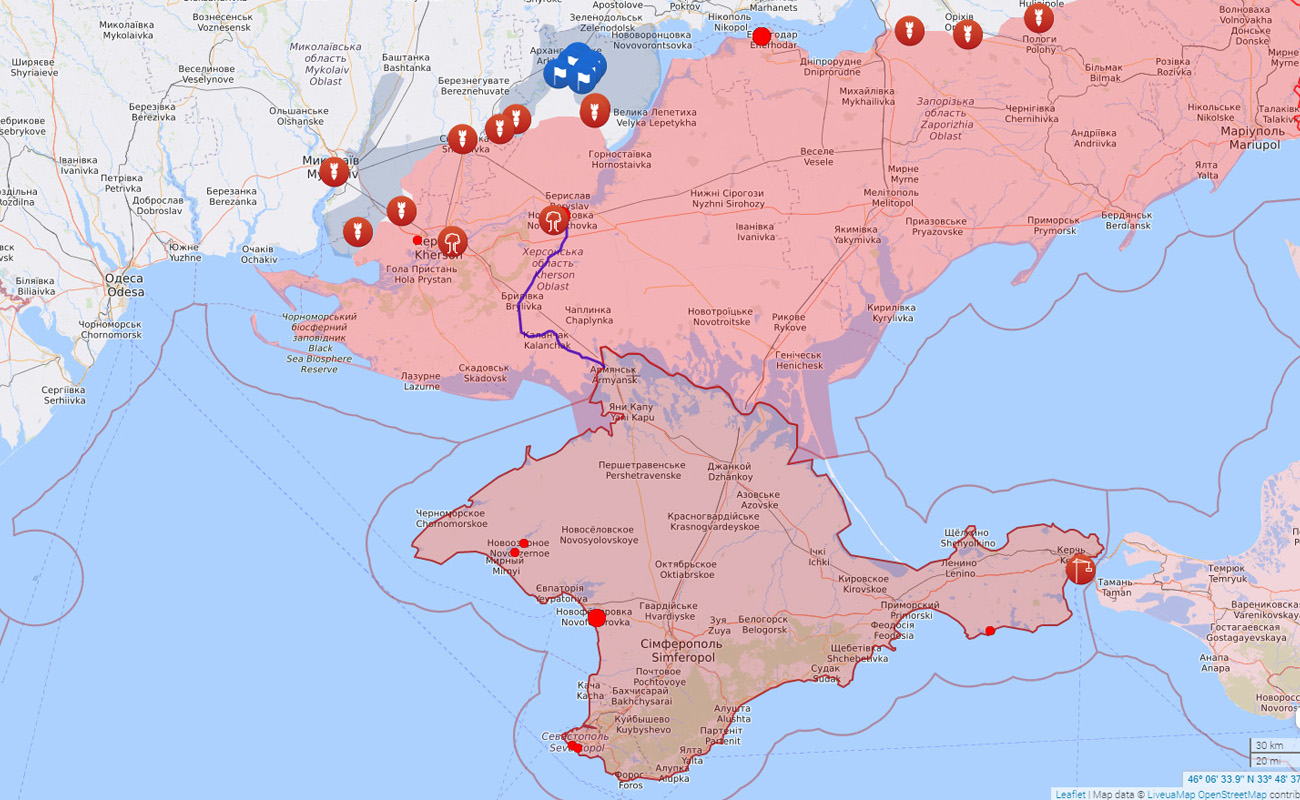
* * *
 This publication has been produced with the support of the European Union. Its contents do not necessarily reflect the official opinion of EED. Responsibility for the information and views expressed in this publication lies entirely with the authors
This publication has been produced with the support of the European Union. Its contents do not necessarily reflect the official opinion of EED. Responsibility for the information and views expressed in this publication lies entirely with the authors